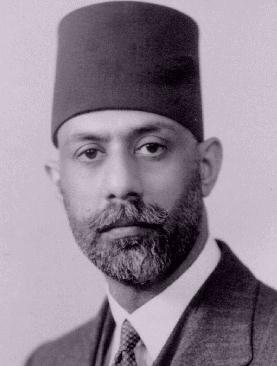
Choudhary Rahmat Ali, born in 1895, obtained his MA and LLB with honours degrees from the universities of Cambridge and Dublin. It was during the years 1930 through 1933, that he established the Pakistan National Movement, with its headquarters at Cambridge, and produced the pamphlet that is reproduced below. In 1948, he visited Pakistan, and then returned to England. He died in February 1951, and was buried in the U.K.
Editor's note: Wikipedia states, while noting that a citation is needed to support this statement:
After the creation of Pakistan he returned to Pakistan in April 1948, planning to stay in this country, but he was ordered by the then Prime Minister Liaqat Ali Khan to leave the country. His belongings were confiscated, and he left empty-handed for England in October 1948.
This is the full text of the pamphlet as published in 1933. It is said that this is the first time the word PAKISTAN was used in print. Note that the words PAKSTAN and PAKISTAN are both used in the pamphlet. A scanned copy of the original pamphlet is available in this pdf file.
3, Mumberstone Road,
Cambridge, England.
28th January. 1933
Dear Sir,
Editor's note:
This is an extract from the Railway Gazette, 5 March 1948, p.276. This material is reproduced here by permission granted generously by the Editor of the Railway Gazette International.